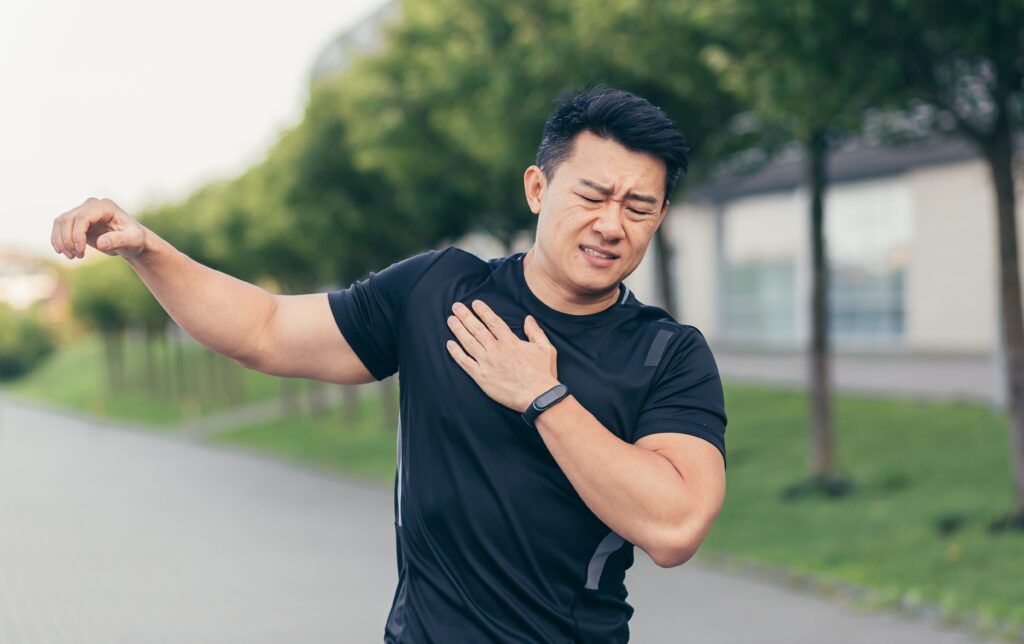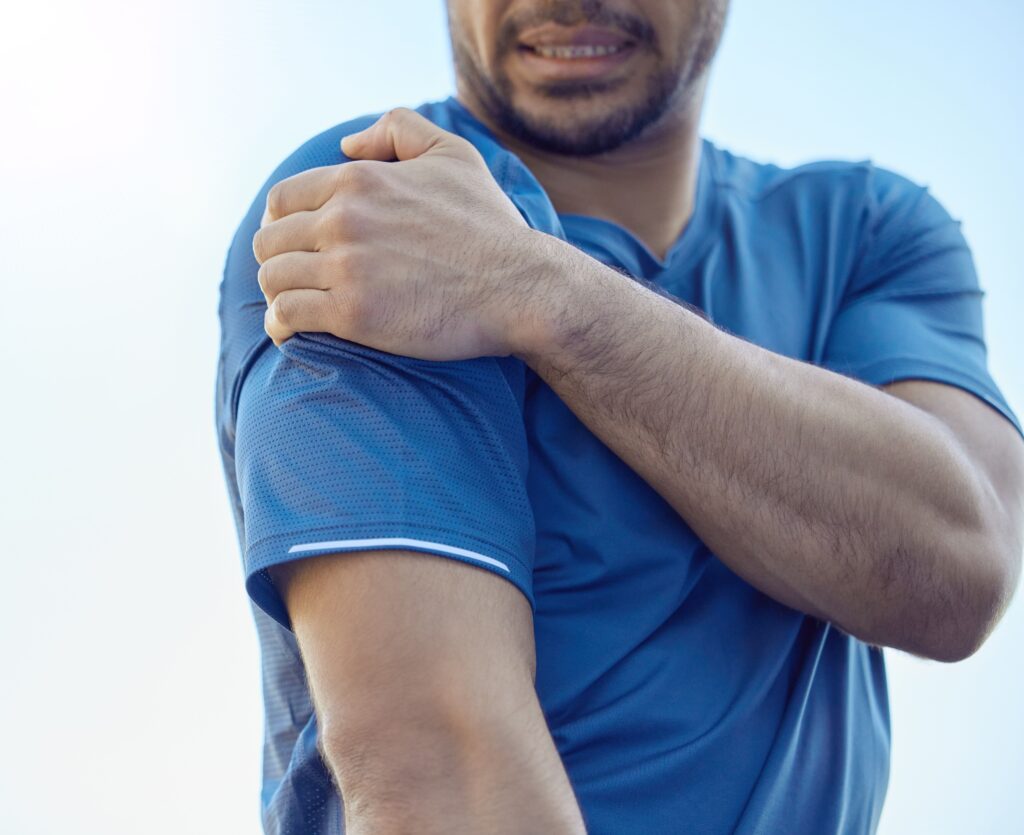Schedule An Appointment With Us
Are Your Symptoms Affecting Your Quality Of Life?
Consult our MOH-accredited orthopaedic specialist for an accurate diagnosis & personalised treatment plan today.

MBBS (S’PORE)
MRCS (Ireland)
MMed (Ortho)
FRCSEd (Ortho)

Shoulder dislocation occurs when the ball of the upper arm bone (humerus) is displaced from its normal position in the socket of the shoulder blade (scapula). This condition can result in pain, unsteadiness, and limited movement of the shoulder joint. The shoulder, being the most mobile joint in the human body, is particularly susceptible to dislocation due to its wide range of motion.
The condition can further be classified as either partial (subluxation) where the head of the humerus is partly out of the socket, or complete where it is completely out of the socket. Both types can cause damage to the surrounding muscles, ligaments, nerves, and blood vessels.
This is the most common type of shoulder dislocation, accounting for approximately 95% of cases. It occurs when the humerus moves forward, causing the arm to be rotated outward and extended.
Accounting for about 2-4% of shoulder dislocations, posterior dislocations happen when the humerus moves backwards relative to the shoulder socket.
Rare and constituting less than 1% of cases, inferior dislocations occur when the humerus is displaced downward. This type is often accompanied by a characteristic position of the arm being held up and away from the body.
Understanding the causes of shoulder dislocation is important in both prevention and treatment strategies.
Recognising the symptoms of a shoulder dislocation is key to seeking timely medical attention.


Schedule An Appointment With Us
Consult our MOH-accredited orthopaedic specialist for an accurate diagnosis & personalised treatment plan today.
Diagnosing a shoulder dislocation involves several key steps:
In more severe cases, surgical interventions may be necessary to treat a shoulder dislocation.

MBBS (S’pore)
MRCS (Ireland)
MMed (Ortho)
FRCSEd (Ortho)
Dr Kau (许医生) is a Fellowship trained Orthopaedic Surgeon with a subspecialty interest in Hip and Knee surgery and has been in practice for more than 15 years.
He is experienced in trauma and fracture management, sports injuries, and joint replacement surgery.
Preventing a shoulder dislocation is as important as treating one. These measures include:
For Singaporeans, Singapore Permanent Residents and Foreigners.
Please speak to our friendly clinic staff about using your insurance plans.

If you have any enquiry, please do get in touch. Leave us a message and we will get back to you shortly.
Recovery time varies depending on the dislocation’s severity, treatment method, and individual health. Typically, non-surgical recovery may take several weeks to a few months, while surgical recovery can extend from several months up to a year.
Treatment, whether surgical or non-surgical, significantly reduces the risk of recurrence. Absolute guarantees are rare, but adherence to medical advice, rehabilitation exercises, and preventive measures can greatly improve long-term outcomes.
Possible long-term effects include chronic pain, stiffness, and an increased risk of arthritis in the joint. Regular follow-up and adherence to rehabilitation exercises can help mitigate these risks.
The timeline for returning to normal activities varies. Non-surgical recovery typically allows for a gradual return to normal activities within several weeks to a few months.
Following a surgical procedure, the timeline might be longer. It is important to follow your orthopaedic surgeon’s advice and complete physical therapy to restore strength and mobility.